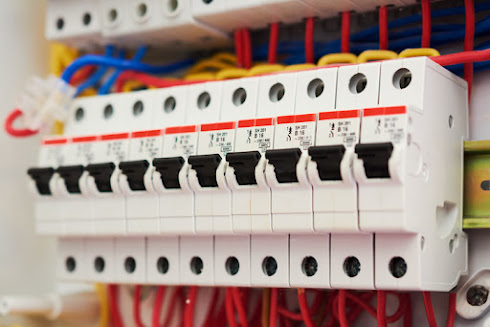NFC 15-100 for the electrical panel in 5 key points
The objective of the NFC 15-100 is to facilitate the use and above all to ensure the protection of your electrical installation as well as that of people. It is intended for owners who build, renovate or modify the surface area of their home and whose work requires changes in the organization of electrical circuits.
More specifically, it gives the strict rules to be observed in terms of installing equipment in the different rooms of your home. So, for example, you can find for each part:
Standford Electrical Standford Electrical Standford Electrical Standford Electrical Standford Electrical Standford Electrical Standford Electrical Standford Electrical Standford Electrical Standford Electrical
the type of material (e.g. an earth connection)
location (e.g. near the switch)
and the number recommended according to its surface (ex: 5 outlets for 30 m2).
It also defines the obligations relating to the composition and installation of your electrical panel , also called “distribution panel”. This is important to take into account when choosing your electrical panel .
The latter, the nerve center of the electrical installation, guarantees the safe circulation of electric currents within your home. It is thanks to him that all parts and equipment are supplied.
Note that the part concerning the electrical panel is called “NF C 15-100 electrical panel”.
Standford Electrical Standford Electrical Standford Electrical Standford Electrical Standford Electrical Standford Electrical Standford Electrical Standford Electrical Standford Electrical Standford Electrical
The obligations of standard NF C 15-100 for the electrical panel
The part of the standard N FC 15-100 dedicated to the electrical panel concerns the location and the number of devices that make up this panel.
1 / The ETEL and the GTL
First obligation of the NFC 15-100 standard: the installation of an “electrical technical space for housing” , more commonly known by its acronym ETEL. This is a location within your home, the volume of which is devoted exclusively to receiving the core of your electrical installation.
Indeed, since September 2016, the NF C 15-100 standard states that all the arrivals of these 2 types of current must be located in the same place within a home. This place, identified as ETEL, thus centralizes all arrivals from your accommodation in the technical housing unit (GTL) .
This includes all the control, protection and communication equipment, including the electrical panel and the communication box .
Standford Electrical Standford Electrical Standford Electrical Standford Electrical Standford Electrical Standford Electrical Standford Electrical Standford Electrical Standford Electrical Standford Electrical
Which dwellings are affected?
all new residential premises, individual or collective
all existing residential premises, individual or collective, undergoing total renovation with redistribution of walls
In some cases, the equipment included in the ETEL must be located in a single room or in several different rooms, outside the home:
in the case of residential homes
in the case of living quarters supplied by an autonomous energy source with a powerful power of less than 6 kVA
if it is an individual dwelling supplied by a connection of a monitored power or by a private transformer station.
Standford Electrical Standford Electrical Standford Electrical Standford Electrical Standford Electrical Standford Electrical Standford Electrical Standford Electrical Standford Electrical Standford Electrical
Rules applicable to ETEL
be easily accessible, for example in the entrance to the accommodation or in a technical room
not be in high-risk areas: pipes (air / water), in bathrooms, damp, dusty or high-risk areas (fire, explosion, etc.)
have as minimum dimensions on the ground: 60 cm x 25 cm
encompass all space from floor to ceiling
exceed in width 10 cm compared to that of the technical housing duct
Rules applicable to GTL
The technical housing duct must be 25 cm wide . It can contain both the electrical panel and the communication box.
The C 15-100 standard also defines the elements contained in the GTL:
the main distribution table of your accommodation
emergency shutdown of all sources of production in your home
the control panel (if it is placed inside the housing)
the communication box
a space adjoining or integrated into the communication box to accommodate the equipment of the communication operator (internet box) as well as additional equipment (Ethernet switch, TV amplifier)
at least one socket with two 16A sockets
the building management facilities (if applicable): video protection , security alarm against intrusions , etc.
Standford Electrical Standford Electrical Standford Electrical Standford Electrical Standford Electrical Standford Electrical Standford Electrical Standford Electrical Standford Electrical Standford Electrical
On the other hand, this GTL must be equipped with rails, chutes, clips etc. allowing to fix the various equipments, the switchboard and the electric wires.
Current arrivals and departures can be made through the floor or through the ceiling. The GTL must be materialized:
in the lower part for departures and arrivals from below
in the upper part for departures and arrivals from above
from floor to ceiling for departures and arrivals from above and below
Wires and electric cables entering the GTL must be protected by ICTA sheaths.


Comments
Post a Comment